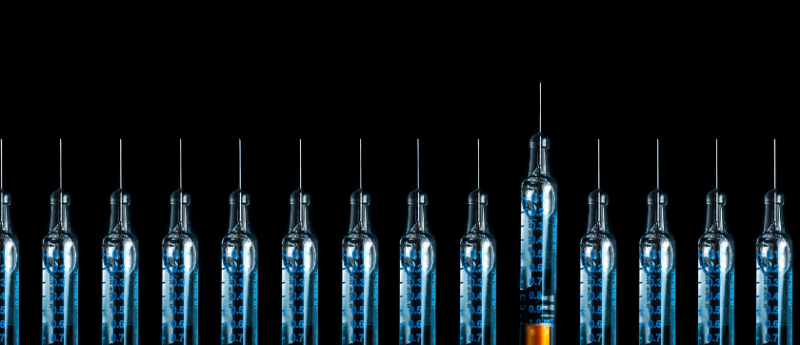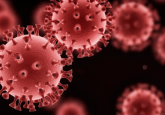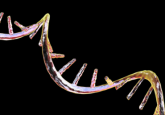Self-amplifying RNA vaccine against COVID-19

Precision Nanosystems (Vancouver, Canada) is a nanobiotechnology company that researches solutions in medicine using RNA, DNA, CRISPR and small molecule drugs with the aim to take them from bench to bedside. They hope to accelerate the creation of transformative medicines that significantly impact human wellbeing. This includes working with Imperial College London (UK) on the development of a self-amplifying RNA (saRNA) vaccine for use against COVID-19 in the current pandemic.
Recently Anna Blakney (Imperial College London), who is working as part of the team developing the COVID-19 vaccine using saRNA, delivered a webinar on the research, which is summarized below.
Why do we need new vaccines?
There are many reasons as to why new vaccines are being continuously developed. There are increasing concerns over the emergence of multidrug-resistant bacteria, with fears that antibiotics will become redundant and scientists are looking into new ways of combating this. Improving safety and efficacy of vaccines, as well as reducing cost and time of production is of high importance. Vaccines need to adapt to circumstances such as the changing age structure of populations and, of particular importance, for the prevention of outbreaks.
Current nucleic acid vaccines use RNA or DNA to express antigens and incite an immune response once delivered via an appropriate vehicle into the nucleus or cytoplasm target without degradation.
These types of vaccines have several advantages including speed of development, the ability to encode for any antigen, a high degree of safety and thermostability, modifications can be made post-translationally and they are able to express membrane-bound proteins.
Self-amplifying RNA
saRNA provides further advantages that lends itself to use in vaccines. It is easier to deliver as it does not need to penetrate the nucleus and therefore, there is no risk of integration into the host genome. The saRNA has the ability to self-replicate quickly in a similar way to self-amplifying mRNA, however, compared with mRNA, more copies of RNA in cytoplasm can be produced, leading to an increase in RNA expression in cells and therefore, the dose can be minimized. This technology has been shown to produce promising protective immune responses, comparable with that demonstrated in viral delivery techniques, but without the limitations viral techniques incur.
The COVID-19 vaccine
This team, working in conjunction with the group run by Molly Stephens at Imperial College London have developed a polymer called pABOL. This is a bioreducible cationic polymer that can be used as a delivery vehicle for saRNA.
pABOL may increase immunogenicity by inducing cytokine markers, making it ideal for use as a carrier for treating viruses.
The SARS-CoV-2 glycoprotein, or ‘spike’ protein, is very similar to that of SARS-CoV-1 and MERS-CoV so this could easily be taken as a template to make a spike protein to use in the COVID-19 vaccine.
Many factors enabled the rapid manufacturing process of the vaccine, which have been summarized in this timeline of development of the saRNA vaccine for COVID-19.

Information obtained from self-amplifying RNA vaccine against COVID-19 webinar
Different formulations of the vaccine were tested via an ELISA test: pABOL, pABOL and MPLA, EP (electroporated DNA) as a positive control and rabies (RABV) as a control. These were all compared directly to recovered COVID-19 patient antibody and neutralization data.
The results revealed that the antibody titer in mice given the saRNA vaccine was greater than that from a natural infection as shown in the recovered COVID-19 patients. Higher neutralization was also shown in the vaccine samples than in the recovered patients.
The next stages in vaccine development include dose escalation studies planned for June 2020 with the first patients dosed on the 15th. Safety and immunogenicity trials will continue until September and from then efficacy studies with a cohort of 5000 patients will be rolled out. Implementation of the vaccine once all previous trial stages have been successfully passed is planned for 2021 for 20 million people.
Future challenges
Flu vaccines are still not manufactured using a high-throughput method, this limits the number of vaccines that can be made in a year. Other vaccines are made in large bioreactors – equipment that is not readily accessible across the globe, limiting access in certain countries. This method also requires the growth of cells for live-attenuated viral delivery, which is a time-consuming and costly method.
With RNA vaccines, these challenges can be overcome as you can manufacture many more doses simply in a standard lab. Using the method presented, one million doses can be prepared from 100 ml.
These vaccines can also be locally produced, which is important in ensuring different countries all over the world have the capability to produce vaccines – a challenge we have seen in the current COVID-19 pandemic – meaning greater access globally to the same level of care.
Future manufacture of vaccines
Currently the manufacture of the saRNA vaccine is fragmented, with the RNA being made in California (USA), the lipids for the lipid encapsulation from Vancouver (Canada); these are combined in Austria in a GMP formulation unit then the combination is shipped to Italy to be put into vials where they are finally sent on to the UK for the clinical trials. Although this demonstrates good global collaboration it also gives rise to difficulties in shipping conditions, as the vaccines must be maintained at a certain temperature and have a limited time frame for use.
Local vaccine production units, with good GMP, could produce a large number of vaccines from a smaller amount. Smaller technology centers where the production of vaccines can happen all in one place – modular manufacturing – means less reliance on major pharmaceutical companies in future outbreak situations.
The full webinar and presentation can be found here >>>
For more information on this and other vaccines in development for use against COVID-19, see the vaccines updates here >>>
For more COVID-19 related content, please see our COVID-19 Hub here >>>





